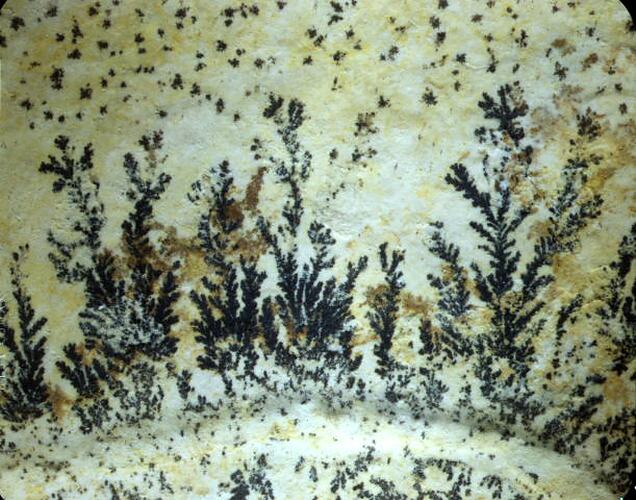
Pseudofossils, or false fossils, are objects that do not have a biological origin but may be mistaken as a fossil. They have mineralized markings or objects that look like fossils but are actually just unusual formations in the rock. If mineral-bearing water enters a gap between two pieces of rock, the minerals may deposit in patterns that resemble fossilized moss or ferns. Such pseudofossils are called dendrites, from the Greek dendron, meaning “tree.”
UNUSUAL CAMBRIAN PSEUDOFOSSILS FROM NORTHAMPTON COUNTY, PENNSYLVANIA
Proceedings of the Pennsylvania Academy of Science, vol. 28, 1954, pp. 91–95.

A septarian concretion or Pseudofossil, Cut and polished septarian concretion, 15 cm wide, showing the mineral-filled cracks. Although sometimes mistaken for fossils, septarian concretions have an inorganic origin.
A septarian concretion or Pseudofossil. Photograph. Britannica ImageQuest, Encyclopædia Britannica, 25 May 2016.
quest.eb.com/search/119_1789311/1/119_1789311/cite. Accessed 3 Dec 2020.

Pseudofossil, dendrites of Manganese Dioxide.
Museums Victoria, Accessed 3 December 2020.

Dendritic form of manganese oxide (orange) in a sedimentary rock on a beach.
Manganese oxide, dendritic form. Photography. Britannica ImageQuest, Encyclopædia Britannica, 25 May 2016.
quest.eb.com/search/132_1235347/1/132_1235347/cite. Accessed 10 Feb 2022.